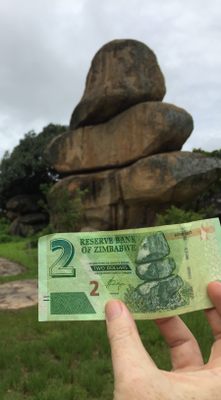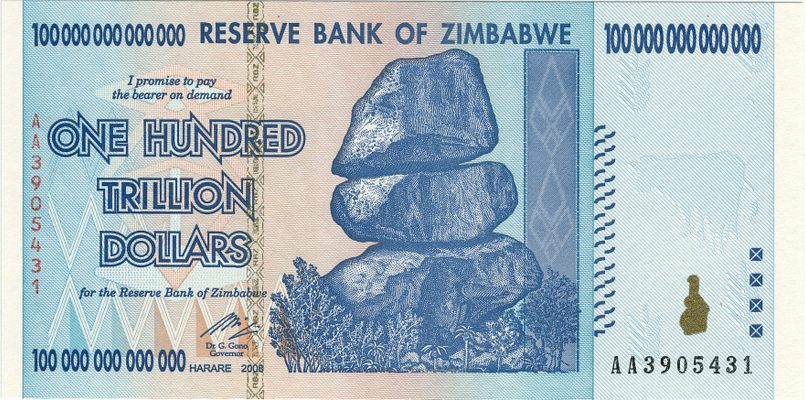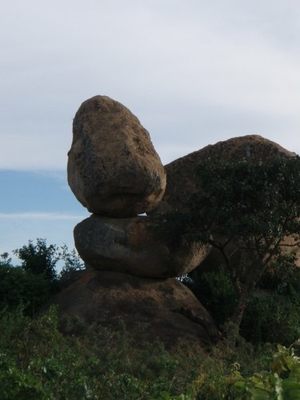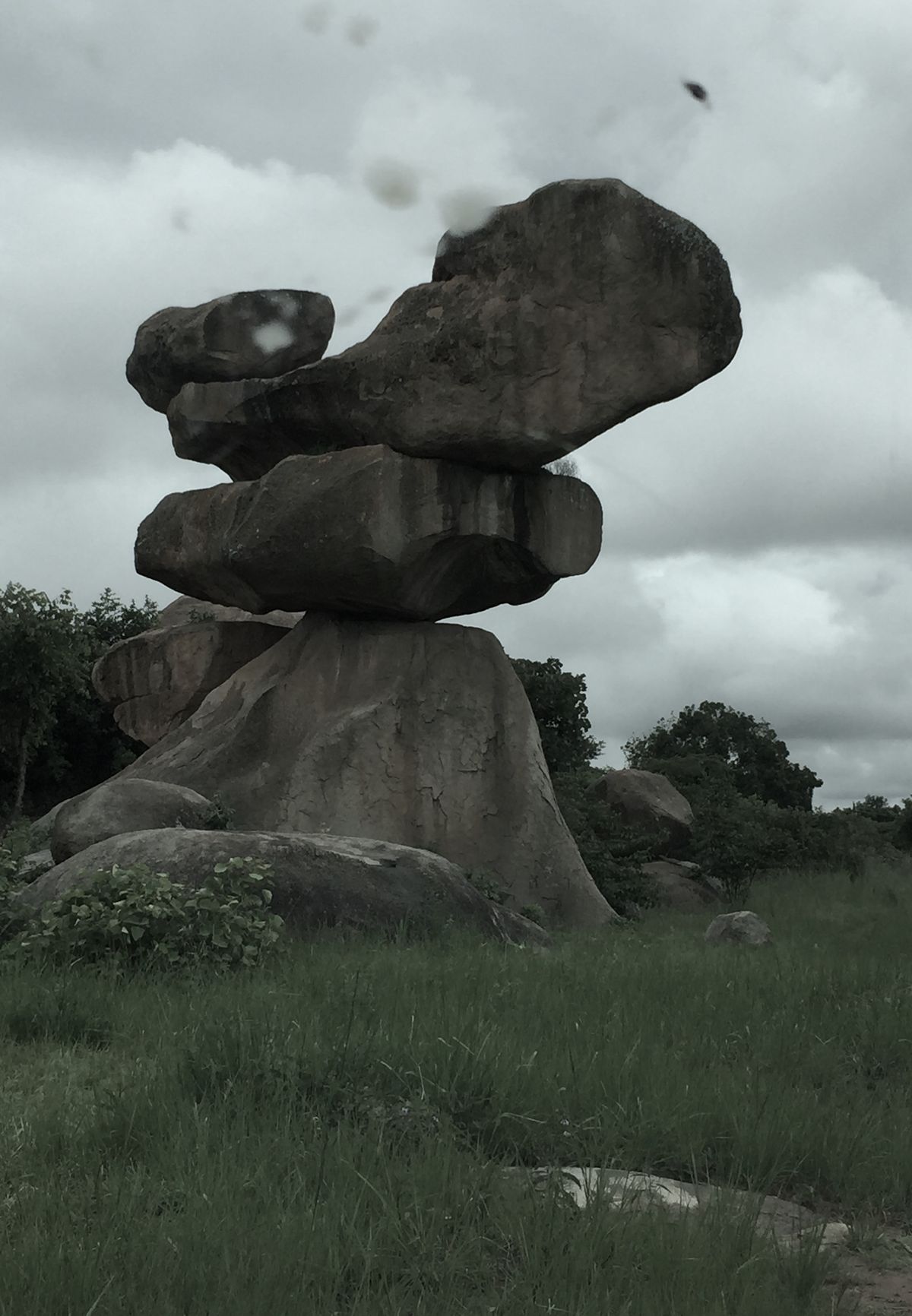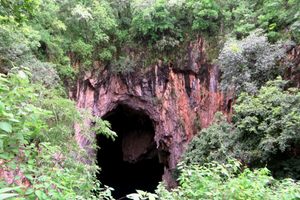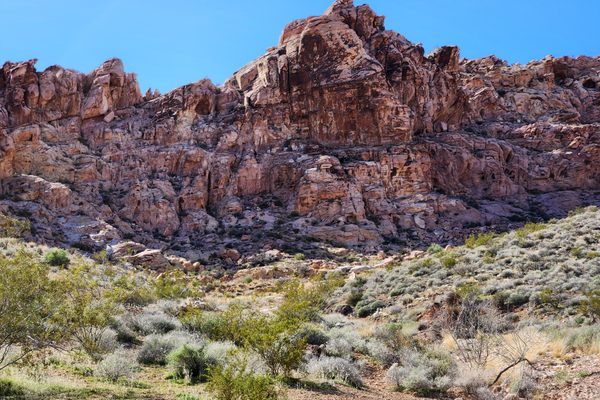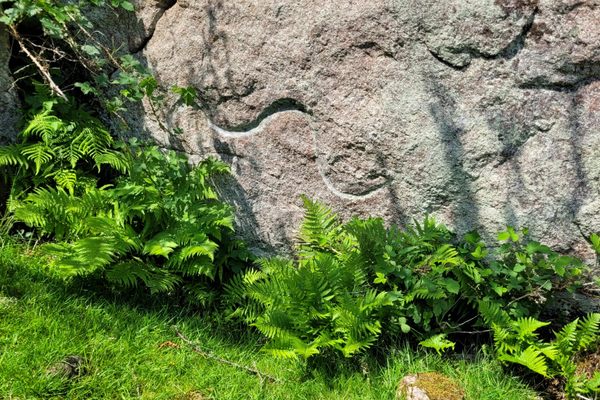About
These three balancing rocks were once the main design motif of one of the highest of the high denomination currencies in the world, the Zimbabwean dollar. Every note issued by Zimbabwe’s Central Bank—from the one-dollar note issued after independence in 1980 to the 100 trillion-dollar banknote (100,000,000,000,000) issued in the hyper-inflationary zenith of 2008, has pictured these three stones.
The image of the stones was chosen as a conjoined metaphor for development and environmental protection following the country’s independence from white-ruled Rhodesia. The rocks themselves can be found in a national park with an abandoned feel in Epworth, a suburb in the thinly signposted outskirts of Harare. The stones pictured on the banknotes are the most iconic example of this peculiar geological feature found in many places throughout Zimbabwe: rocks formations naturally situated in perfect balance.
Matopos itself is well worth seeking out. Once inside, visitors can either walk or drive around the Stone Age rock formations with evocative names like the "Giant’s Playground" and "Flying Boat." Even rocks with no honorific convey a silent magnitude. Outside the park, some enterprising residents have built their homes among the giant boulders that pock all of Epworth.
The Zimbabwean dollar, however, is no more. The government effectively abandoned its currency and was de-monetised entirely in 2015. Now, the notes can be found on eBay, on the back of playing cards, in the hands of hawkers trying to sell the dead currency to tourists visiting Zimbabwe, or as props for cautionary tales of the dangers of runaway inflation, devaluations, and mercurial government economic policy.
Nowadays, Zimbabwe has a multi-currency system. Money from almost every continent in the world is legal tender: the Aussie dollar, the British pound, the Botswanan pula, the Chinese Yuan, the Euro, the Indian Rupee, the Japanese yen, the South African rand. However, the most predominant note in circulation is the U.S. dollar in which prices are quoted in shops, restaurants, and, yes, even parks housing the iconic balancing stones. "Bond coins" of 1,2,5,10, 25 and 50 cent dominations are given out as small change.
But the stones are making a making a comeback in the newest type of money in Zimbabwe’s bountiful currency basket. Last year, the Zimbabwean government introduced a "bond note" that is pegged to the U.S. dollar and is illustrated with those same rocks from the old Zimbabwean dollar. Only a 2 dollar bond note is in circulation currently, but the government plans to incrementally introduce 5, 10, 20 and 50 dollar values over the next few months.
Having a local currency bound to another is unusual, but by no means unique. Bosnia-Herzegovina has convertible mark tied originally to the German Deutschmark and now to the euro. For 50 or so years, there was de facto parity between the pounds of Ireland and the United Kingdom. But there remains apprehensiveness among many Zimbabweans who remember the old Zimbabwe dollar days. They live in hope that their new money will be as solid, stable, and unwavering as these three majestic rocks themselves.
Related Tags
Know Before You Go
Private car or a knowledgable taxi driver is the best way to get there.
Community Contributors
Added By
Published
January 19, 2017

